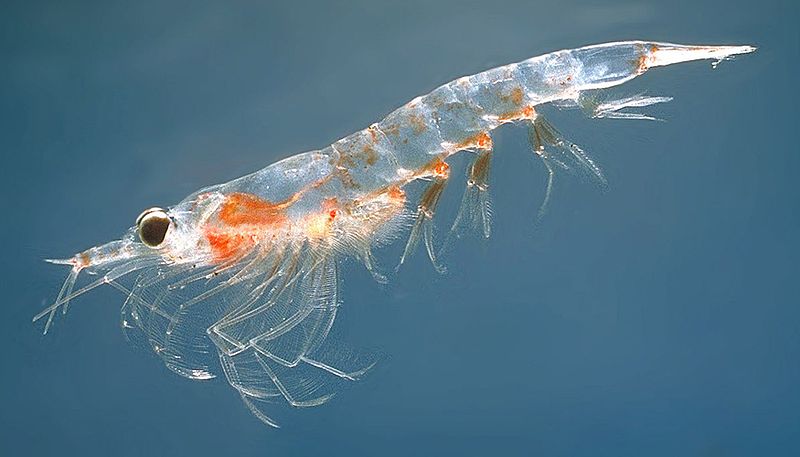
Photo courtesy Wikimedia Commons
Good news today. NOAA published a final rule that will go into effect 12 August prohibiting the harvesting of the shrimplike invertebrates known as krill off California, Oregon, and Washington.
The states themselves already have regulations prohibiting a krill harvest within three miles of their coasts. But, until now, no federal restriction protected the Exclusive Economic Zone—between three and 200 miles out.
Interestingly, there is no commercial fishery for krill in these waters. Today’s rule is a rare instance of foresight in fisheries management, designed to preserve the foundation of a healthy marine foodweb in the California Current ecosystem, including its five National Marine Sanctuaries.
Krill are vitally important as primary consumers in this ecosystem, feeding on the primary producers:the microscopic phytoplankton that use the energy of sunlight to make life from nonlife.
Numerous commercially important fish feed on krill, including salmon, rockfish, squid, sardine, mackerel and flatfish. Many endangered and threatened species forage on krill, including blue whales, humpback whales, and a variety of seabirds, including Sooty Shearwaters, Marbled Murrelets, and Common Murres.
This krill ban was originally proposed by the National Marine Sanctuary Program and grew from there to include all West Coast waters. The plan is to prevent a commercial krill fishery like the ones that have already taken root in Antarctica, Japan, and off Canada’s Pacific coast. The idea being that fishing the primary consumers of the foodweb is like eating your seed corn.
Most wild krill fished in foodwebs elsewhere in the world are used to feed aquacultured marine life and terrestrial livestock, as fish bait, and for pet foods.
That’s like feeding your seed corn to your milk cow. Or your goldfish.














